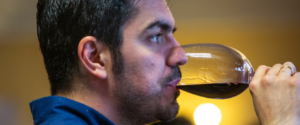People often associate wine aging exclusively with its time spent in the traditional barrels that fill the cellars of the most prestigious wineries in each region. However, did you know that this process continues in the bottle, and that this secondary aging is crucial for the evolution of the wine? Do you know which key factors contribute to a positive evolution, allowing the wine to gain complexity and harmony?
In this article, we will discuss the different stages of wine evolution in the bottle so that you can determine the best time for consumption. Have you ever wondered when to open that special bottle you received as a gift a few months ago? Read on, as we’ll provide some helpful insights.
Several factors influence a wine’s evolution. First and foremost, as always in the wine world, everything begins in the vineyard. The vineyard’s altitude, orientation, vine age, and even the varietal being cultivated, along with the soil type, rainfall, and regional climate, result in grapes with different characteristics that may be more or less suited to barrel and bottle aging. It is often said that acidity (in red, white, and rosé wines), along with tannins and anthocyanins (primarily in red wines), form the wine’s structure and backbone. Colder or rainier climates tend to produce wines with higher acidity and greater aging potential, while warmer climates yield grapes with lower acidity, making them more suitable for young wines.
Of course, the type of winemaking process, whether or not the wine has been aged in barrels, and the temperature conditions during storage also play a significant role.
An improper bottling process can ruin a great wine, making this a crucial factor in ensuring that you can enjoy the wine and know what to expect from each vintage.
Historically, bottles began being used to store wine in the 17th century, although it wasn’t until the 19th and especially the 20th century that they gained significance in the aging process. Glass, as a storage medium, can provide different nuances while also adding an undeniable touch of elegance. Sealing the bottle with a cork limits oxygen exposure, allowing the wine to evolve slowly and gradually, refining and gaining complexity and elegance.
In short, bottling extends a wine’s lifespan, meaning that a well-preserved wine under ideal climatic and storage conditions can remain enjoyable for many years. Before choosing a wine, we recommend finding out how long it has been aged in both barrels and bottles before being released to the market.
Finally, before outlining the three stages of evolution, it’s important to note that not all wines go through the same phases. Most wines are consumed before they reach their maturation stage, quality wines are typically enjoyed at their peak, and only exceptionally aged wines are consumed when they are in decline.
Maturation is a phase where the wine becomes more astringent and loses its fruity flavors, sometimes even developing unpleasant aromas due to a lack of oxygen.
Generally, it is not advisable to drink wine during this transitional period, as it is still evolving and has not yet reached its full expression.
For young wines, this maturation stage is almost nonexistent, as these wines are meant to be enjoyed for their fresh fruit aromas and flavors.
If the wine has undergone proper aging and has been well-crafted, this is the phase where it reaches its full potential. You will be able to detect all its flavors (acidic, sweet, salty, and bitter) in perfect balance, as well as subtle fruit notes and hints of sweet spices, balsamic touches, or dried fruits derived from barrel aging, all fully integrated.
There is no fixed duration for this peak stage, as it depends on the wine’s origin, production method, and storage conditions. It is possible to taste a wine that is over 100 years old and still vibrant after proper decanting. The key is to determine the optimal time for consumption based on your personal preferences. Remember, the best wine is the one you enjoy the most.
The peak phase is the ideal time to drink a wine because all the elements have come together harmoniously after aging. Most sommeliers and restaurants recommend consuming wines during this stage.
The decline phase should be understood in two ways, as the wine begins to lose its organoleptic qualities. First, you may notice a change in color—red wines may become paler, while white wines take on a yellowish hue. Sediment may also form at the bottom of the bottle.
In terms of flavor, the wine may become drier and lose some of the complexity and nuances present during its peak. While it may still be drinkable, it will no longer offer its best expression.
If you are considering drinking a wine in its decline phase, assess whether it’s worthwhile. This is often the case with aged wines in the early stages of decline, where they can still be enjoyable.

Understanding wine evolution will help you appreciate the benefits of this extraordinary beverage and enjoy it at its best. In some cases, a quick visual check will be enough to determine whether a wine is still in good condition or past its prime. Other times, tasting it will be necessary to identify its characteristics. Either way, diving into the world of wine is an exciting journey, and if you are passionate about it, you will learn quickly.
Cheers!
¿Te ha gustado este artículo?